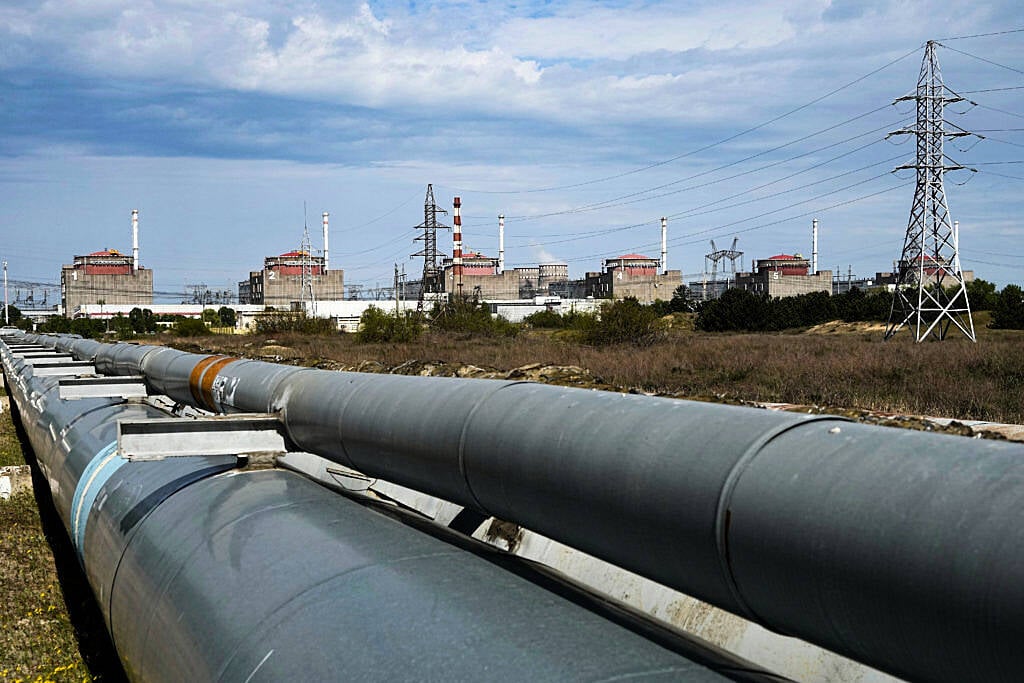Russia’s sustained bombardment of Ukraine’s power grid is raising serious concerns about the safety of the country’s nuclear facilities. A recent drone attack knocked out power for more than three hours to the site of the 1986 Chernobyl nuclear disaster, intensifying fears of a potential nuclear incident.
Although both Chernobyl and the Russian-occupied Zaporizhzhia nuclear power plant are currently non-operational, they still require a constant power supply to maintain crucial cooling systems for spent fuel rods. Without these systems, there is a heightened risk of a nuclear safety issue.
Zaporizhzhia is Europe’s largest atomic power plant. A blackout at either site could also disable the radiation monitoring systems installed to enhance security at Chernobyl, which are operated by the United Nations nuclear watchdog, the International Atomic Energy Agency (IAEA).
Ukraine’s President Volodymyr Zelensky condemned Russia’s actions, stating, “The Russians could not have been unaware that a strike on Slavutych would have such consequences for Chernobyl.” He accused Russia of deliberately creating the threat of radiation incidents and criticized the UN watchdog and its chief, Rafael Mariano Grossi, for what he described as weak responses to the danger.
“Every day of Russia’s war, every strike on our energy facilities, including those connected to nuclear safety, is a global threat,” Mr. Zelensky said. “Weak and half-measures will not work. Strong action is needed.”
The war, which began with Russia’s full-scale invasion of Ukraine more than three years ago, seems no closer to ending despite months of US-led peace efforts. In his nightly video address, Mr. Zelensky revealed that Russia launched more than 20 Shahed drones against energy infrastructure in Slavutych, the city that supplies power to Chernobyl.
According to Mr. Zelensky, a wave of drones overwhelmed defenses and caused a blackout affecting the sarcophagus—the protective structure preventing radioactive dust from escaping the destroyed fourth reactor—and storage facilities housing more than 3,000 tonnes of spent fuel. However, he did not provide specific details about the extent of the impact.
In a reminder of ongoing risks, last February a drone armed with a warhead hit Chernobyl’s protective outer shell, briefly triggering a fire. Officials confirmed that radiation levels did not increase at that time.
Meanwhile, the Zaporizhzhia plant, one of the ten largest nuclear facilities worldwide, has been disconnected from the power grid for over a week. It has frequently been caught in the crossfire during the conflict. President Zelensky blamed Russian artillery for severing the power line to the plant, while Kremlin spokesman Dmitry Peskov attributed the outage to Ukrainian shelling.
Currently, Zaporizhzhia is relying on emergency diesel generators to operate cooling systems for its six shutdown reactors and spent fuel. The IAEA has stated that the plant is not in immediate danger but emphasized the urgency of reconnecting it swiftly to the grid to ensure ongoing safety.
As the conflict continues, the fragility of Ukraine’s nuclear security remains a major international concern, underscoring the need for robust measures to prevent a potential catastrophe.
https://www.breakingnews.ie/world/zelensky-warns-russian-drones-endanger-safety-at-nuclear-power-plants-1813803.html


